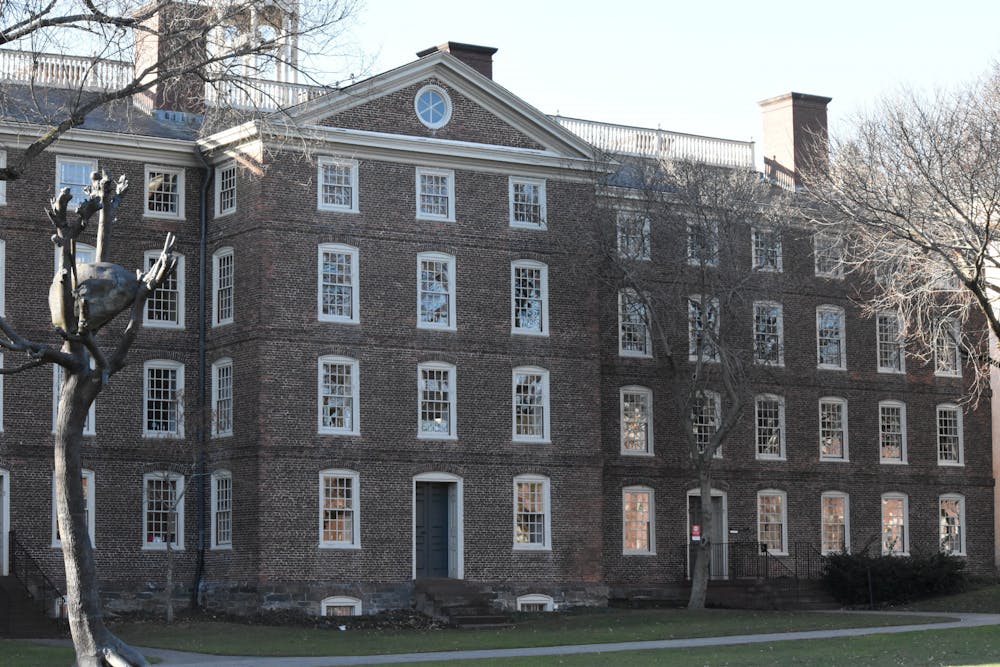The University has completed its 2017 fundraising goal to eliminate loans from undergraduate student financial aid packages, officially making the Brown Promise initiative permanent, according to a Thursday press release.
In September 2017, the University announced the Brown Promise initiative to eliminate loans from undergraduate financial aid packages. To fund the Brown Promise, the University set a fundraising goal of $120 million. By that December, it had successfully raised $30 million, enough to replace all loans with grants for the 2018-19 academic year, The Herald previously reported.
Since then, loans have not been part of the University’s undergraduate financial aid packages — and nearly six years later, the University has reached its $120 million goal, making that elimination permanent, according to the release.
Funded entirely by donors, the Brown Promise initiative has enabled the University to increase access and affordability — especially for moderate-income families who qualify for less aid than low-income families — while reducing the number of students who take out loans, according to the press release.
The percentage of incoming first-year students from moderate-income families has increased from 54% in the 2017-18 academic year to 67% in the 2022-23 academic year, according to the release.
“Making Brown an affordable choice for extraordinarily talented students from every income level is nothing short of transformational,” President Christina Paxson P’19 P’MD’20 said in the press release.
Since its inception in 2018, over 3,500 students have been impacted by the Brown Promise, including 58% of all undergraduates in the 2022-23 academic year, according to the press release. Prior to its implementation, some financial aid packages included federal and Brown institutional loans.
“The Brown Promise sends a clear signal to families about our commitment to affordability and access to students from all income backgrounds,” Logan Powell, associate provost for enrollment and dean of undergraduate admission, said in the press release. “Brown is now attracting families who in the past might not have imagined that Brown would be accessible.”
The Brown Promise is part of the overarching BrownTogether fundraising campaign that is seeking to raise $4 billion total, including $500 million to expand undergraduate financial aid.
“The thousands of dedicated donors who supported the Brown Promise truly understand the importance of building a generous financial aid program for our students, who will be the next generation of leaders in our community and across the world,” Paxson said in the release.
Students interviewed by The Herald expressed a mix of excitement and optimism, citing the importance of increasing affordability.
Niyanta Nepal ’25, co-president of Students for Educational Equity, saw the announcement as a sign that the University is moving toward admitting more students from diverse socioeconomic backgrounds.
“I think that the news release is exciting and a step in the right direction,” she said. “It is good to hear that the promise is being finally fulfilled and will definitely have a positive impact on making the University become more accessible to middle-class and low-income students.”
Centered around access and equality, SEE is a student-run organization on campus dedicated to the redistribution of Brown’s institutional funds to local youth groups, in addition to improving student experiences and accessibility on College Hill. Nepal believes that the initiative aligns well with her organization’s mission and hopes to see the administration take further steps to improve financial aid packages for all students.
“We are also looking forward to a future where Brown is need-blind for international students, which they recently committed to, and want to acknowledge that the commitment towards creating a more affordable and accessible University does not end here,” she added.
Javier Nino-Sears ’25, a moderate-income student from California, believes that it is “fantastic that Brown is expanding financial aid overall” but still believes that the University’s initiatives can go further.
“There’s still a lot Brown could do to continue down the path of ensuring affordability for every Brown student,” he said.
In an email to The Herald, Paxson reflected upon the various initiatives already underway to strengthen the financial aid offered to families of students who are considering attending Brown, breaking down barriers for a wide range of students.
Coupled with the Brown Promise, the University has “also removed home equity as a factor in financial aid calculations, which benefits students from lower- and moderate-income families,” Paxson wrote.
In looking toward the future, Paxson hopes to expand financial aid efforts for other groups of students.
“What’s next is fully funding initiatives to move toward need-blind admissions for international students and to double the number of military veterans enrolled as undergraduates by 2024,” she wrote.
Clarification: A previous version of this story described the Brown Promise initiative as a fundraising campaign as opposed to the goal of removing loans from undergraduate financial aid packages.

Natalie Villacres is a senior staff writer covering the University Hall beat. She is a junior from Queens, New York City, majoring in education and psychology.





